Groomers want dog owners to prioritise their pet’s comfort over appearance, maintain regular home grooming, and clearly communicate health or behavioral issues before the appointment. Preparation at home and honest discussion with your groomer ensures a safer, less stressful grooming experience for both the dog and the professional.
Why Dog Groomer Preparation Matters More Than You Think
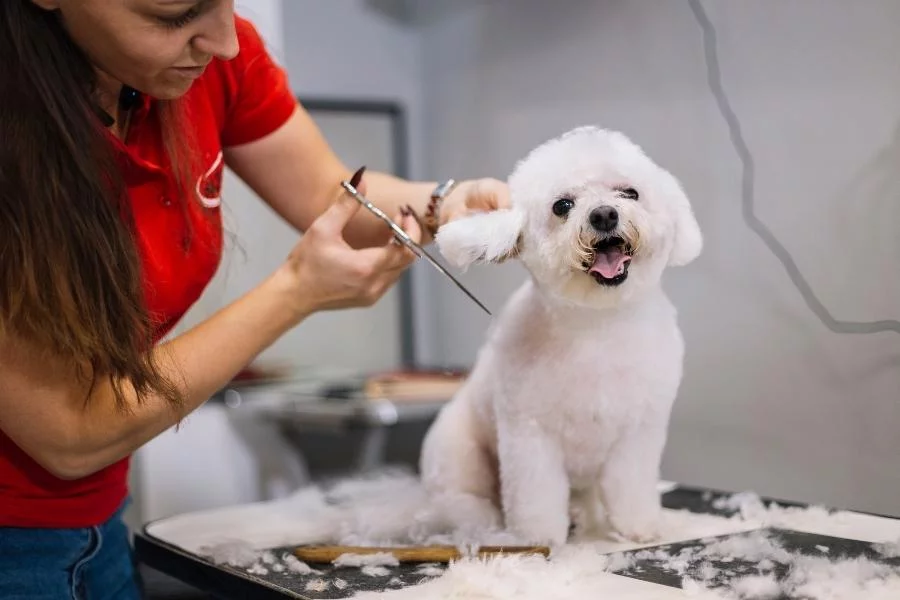
Most dog grooming mishaps aren’t due to lack of skill—they happen because owners didn’t prepare their dogs properly or failed to share important information.
Groomers at Careers Collectiv stress this constantly: a smooth grooming session starts at home. From daily brushing to sharing allergy info, what happens before the appointment often determines how successful the visit is.
Think of a grooming appointment like a job interview—you wouldn’t show up unprepared and neither should your dog.
Groomers Aren’t Just Stylists—They’re Caretakers
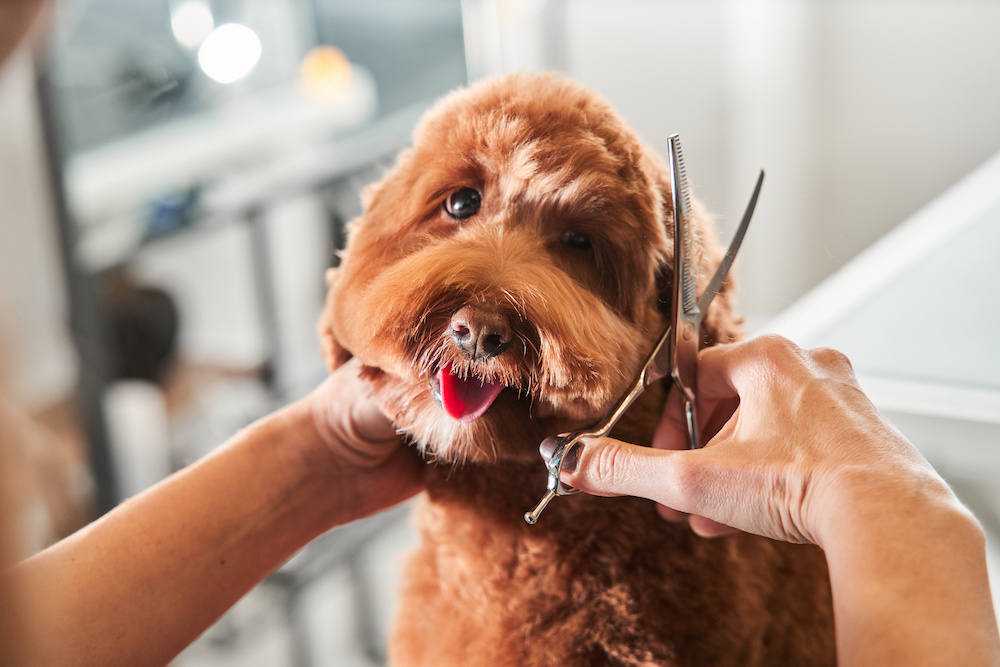
Behind every “puppy cut” or tidy trim is a trained professional managing canine emotions, hygiene risks, and even early health detection. Groomers wish more owners realised:
- They’re not miracle workers—severely matted coats might need shaving
- They prioritise your dog’s well-being over cosmetic trends
- They want your dog to enjoy grooming, not fear it
What Groomers Expect from You
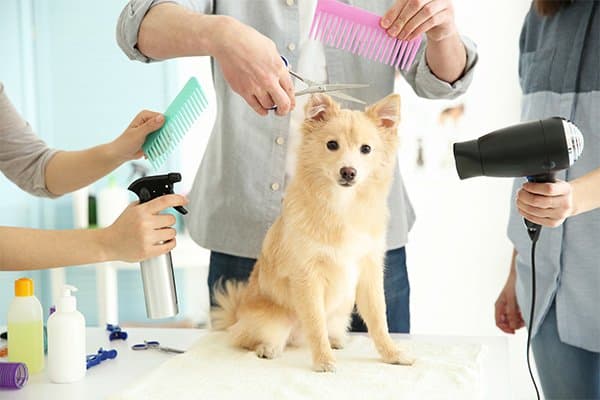
Dog groomers aren’t just trimming fur—they’re handling a living, moving, sometimes nervous animal. Here’s what they hope you’ll do:
- Brush your dog at home, especially for long-haired breeds
- Let them know about behavioral issues (e.g., nipping, fear of dryers)
- Disclose any allergies, medical conditions, or special needs
- Avoid unrealistic expectations—don’t ask for a look that’s impossible for your dog’s coat type or condition
A lack of preparation often leads to:
- Longer appointments
- Higher stress for the dog
- More grooming charges
- Potential injuries or sedation recommendations
At-Home Prep Before Grooming Day
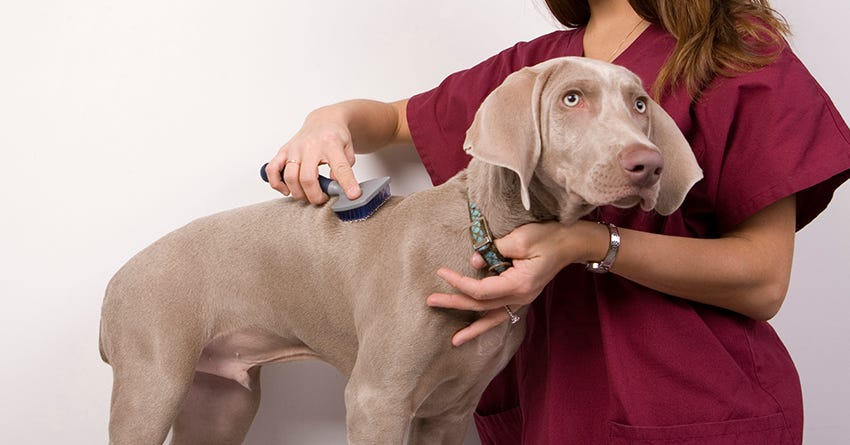
You can’t just show up and hope for the best. Preparing your dog before the appointment sets everyone up for success.
Daily/Weekly Grooming Routine
- Brushing:
- Long-haired breeds (e.g., Shih Tzus, Doodles): Daily brushing
- Double-coated dogs (e.g., Huskies, Shepherds): Undercoat rake during shedding season
- Curly coats (e.g., Poodles): Use slicker brushes and metal combs
- Short-haired breeds (e.g., Beagles): Weekly brushing to remove loose fur
- Long-haired breeds (e.g., Shih Tzus, Doodles): Daily brushing
- Bathing:
- Only bathe 48+ hours before an appointment if needed
- Use a pH-balanced dog shampoo
- Never use human shampoo—it dries out the skin
- Only bathe 48+ hours before an appointment if needed
- Paw & Ear Handling Training:
- Gently touch paws and ears daily to desensitise
- Use treats during nail trims or when introducing a brush
- Gently touch paws and ears daily to desensitise
- Dryer Desensitisation:
- Let your dog hear the hairdryer at low settings
- Reward calm behavior during the sound exposure
- Let your dog hear the hairdryer at low settings
- Potty & Exercise:
- Take your dog for a potty break and a short walk before drop-off
- A tired dog is usually calmer and less reactive
- Take your dog for a potty break and a short walk before drop-off
What to Tell Your Groomer (And How to Say It)
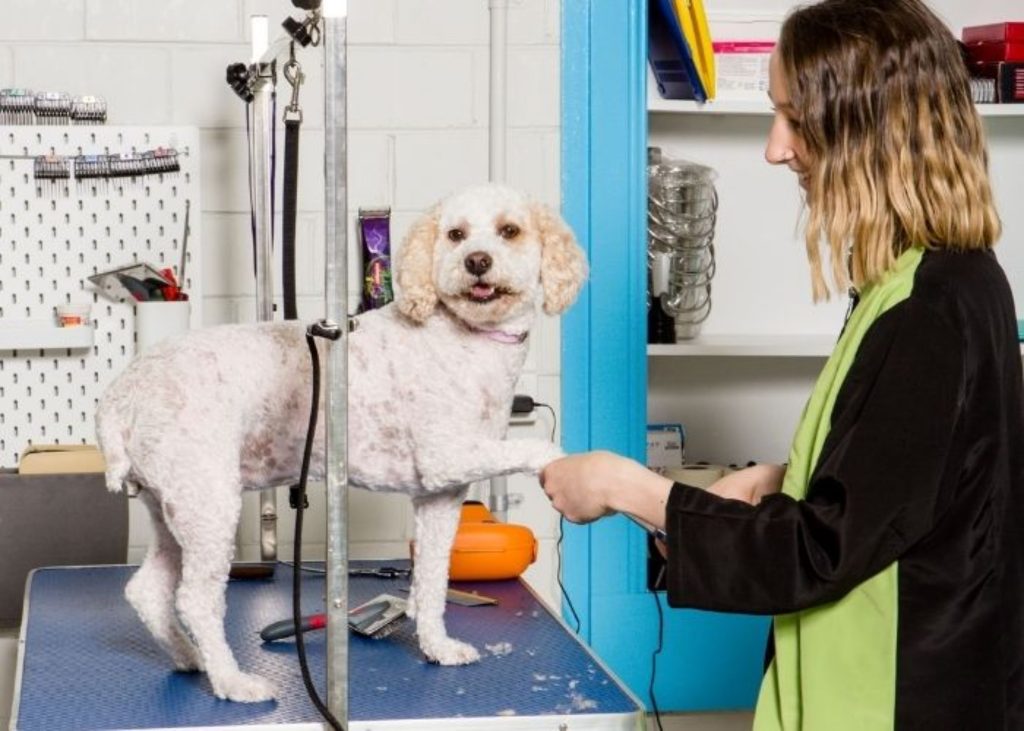
Clear communication is crucial. Don’t assume your groomer knows what you mean by “just a trim.”
Bring a written or printed note with the following:
- Coat length preference (e.g., “5mm puppy cut all over”)
- Special focus areas (e.g., “trim around eyes, sanitary area clean”)
- Areas to avoid (e.g., “do not trim tail, ears are sensitive”)
- Health notes (e.g., “has hip dysplasia—be gentle lifting legs”)
- Behavior warnings (e.g., “snaps when ears are touched”)
- Allergies (e.g., “no peanut butter treats, allergic to oats”)
This keeps expectations aligned and avoids post-groom surprises.
Choosing the Right Grooming Salon
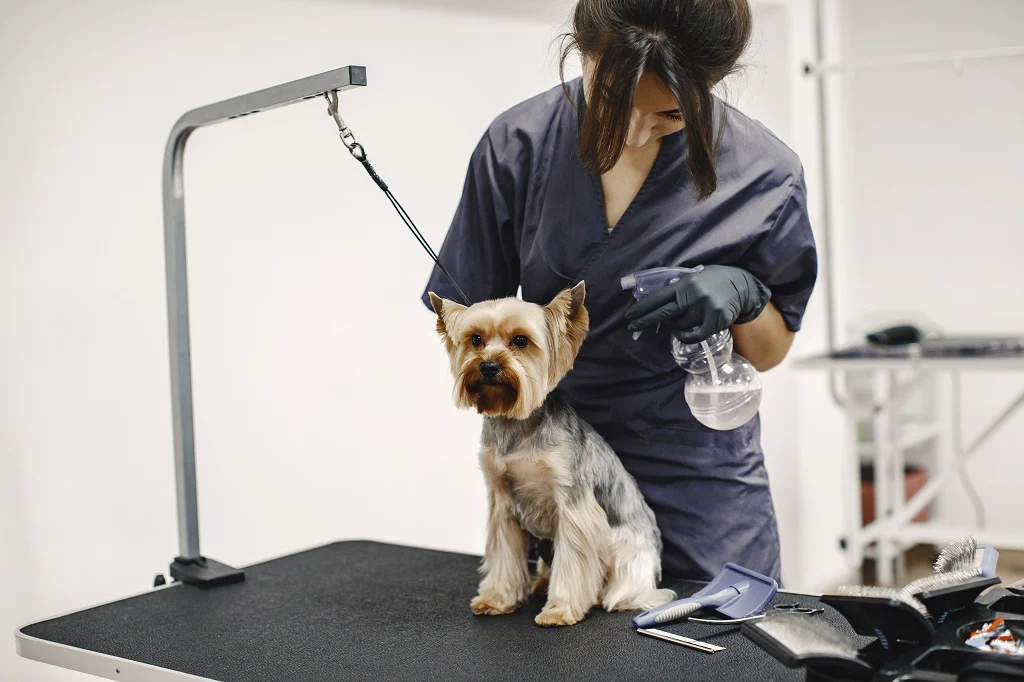
Not all groomers or salons are equal. Here’s what to consider:
- Cleanliness: Floors, tables, tools should be sanitised between dogs
- Experience with your dog’s breed
- Handling philosophy: Look for “force-free” grooming practices
- Reviews: Check Google or Facebook feedback
- Price transparency: Ask for base rates, dematting fees, and extras
- Cancellation and late policies
Red flag: If a groomer refuses to discuss handling techniques or health protocols, look elsewhere.
Day-of Appointment: Checklist for Owners
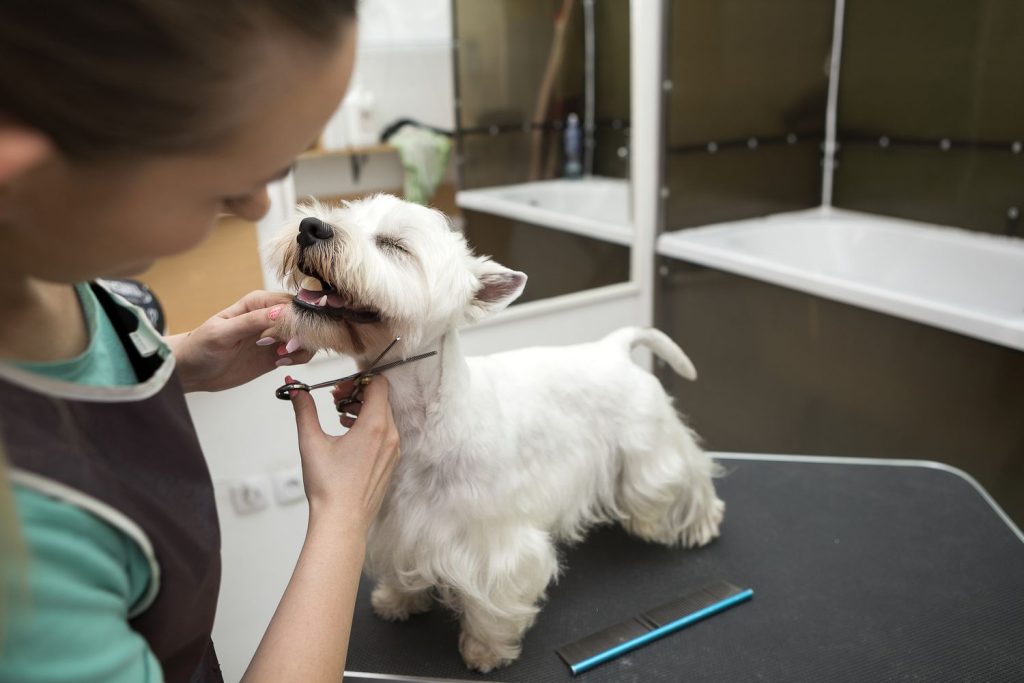
Prepare everything your dog might need for the visit.
What to Bring
- Leash or harness (secure, no retractable leads)
- Vaccination record (especially for new salons)
- Written instructions (coat length, health issues, allergies)
- Comfort item (e.g., small towel with your scent, chew toy)
- Brush (if specific tools are required or helpful)
What to Do
- Potty your dog before drop-off
- Give a light meal at least 1 hour before
- Avoid high-energy play right before
- Stay calm—your dog will mirror your energy
- Potty your dog before drop-off
What Happens After the Groom?
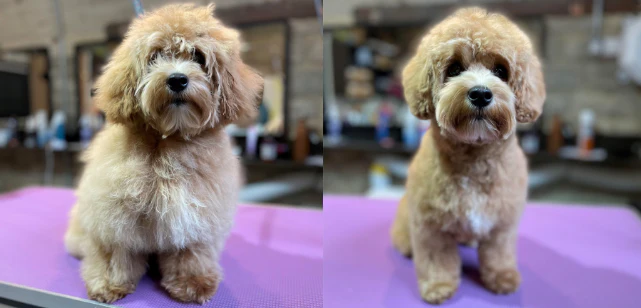
The visit doesn’t end when your dog looks cute. Post-groom care ensures long-term coat and skin health.
- Inspect skin and coat: Look for redness, bumps, or irritation
- Brush lightly: Especially if your dog is prone to matting again quickly
- Provide water and let them rest: Grooming can be exhausting
- Observe behavior: If your dog is licking or chewing excessively, call the groomer or vet
Mistakes That Make Groomers’ Jobs Harder
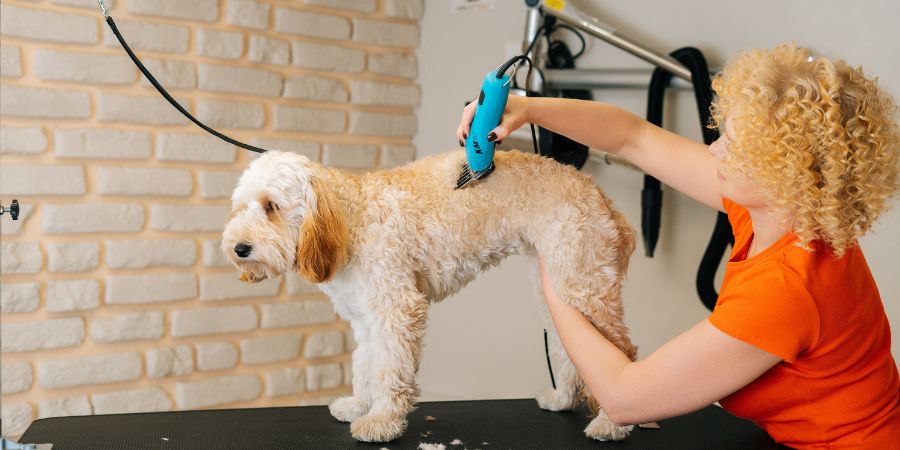
Want your groomer to love you? Avoid these common pitfalls:
- Bringing a wet or dirty dog
- Sand, mud, or soaked coats make grooming longer and riskier
- Sand, mud, or soaked coats make grooming longer and riskier
- Using human products at home
- They strip natural oils, cause itchiness, and can burn skin
- They strip natural oils, cause itchiness, and can burn skin
- Not brushing between grooms
- Leads to painful matting and often results in full shaving
- Leads to painful matting and often results in full shaving
- Expecting a “show dog” result from a neglected coat
- Failing to mention fear or aggression
- Creates a dangerous working environment
- Creates a dangerous working environment
Breed-Specific Prep Tips You Might Not Know
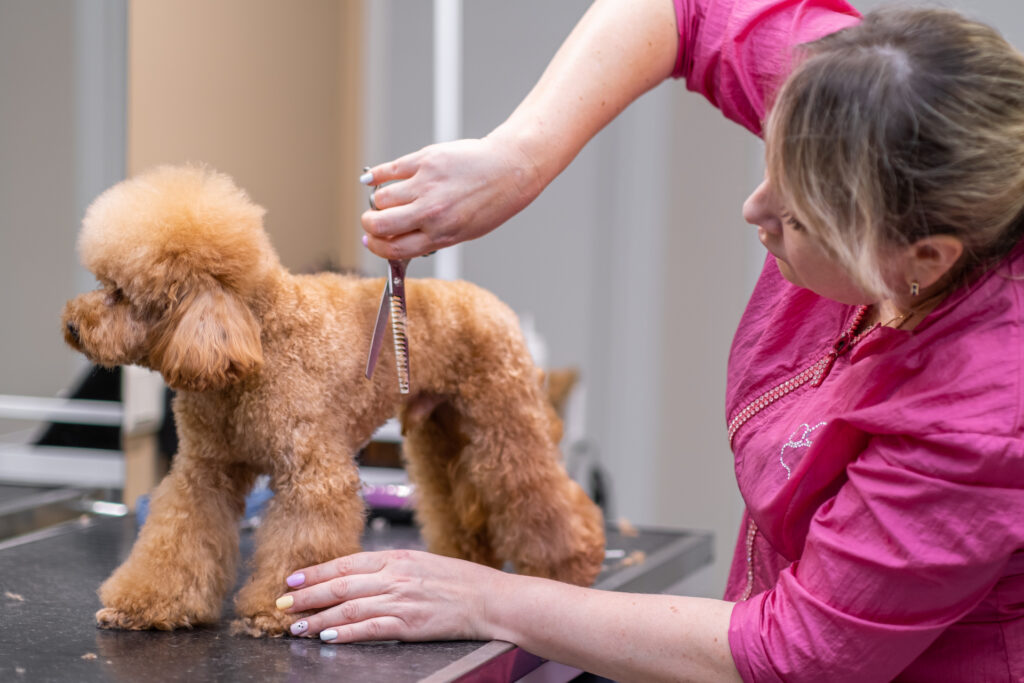
Every breed has quirks. Here’s what groomers wish you understood:
Poodles & Doodles
- Must be brushed DAILY
- Mats form close to skin and are often invisible until too late
- Need full grooms every 4-6 weeks
Double-Coated Dogs (e.g., Huskies, Golden Retrievers)
- Never shave the coat—it damages their natural insulation
- Use deshedding tools and regular blowouts to manage shedding
- Bathe only when dirty and always dry thoroughly
Short-Haired Breeds (e.g., Bulldogs, Boxers)
- Wipe folds regularly
- Use gentle shampoos for sensitive skin
- Trim nails more frequently due to fast growth
Seniors or Anxious Dogs
- Book early-day appointments
- Limit grooming time
- Use calming chews if recommended by a vet
Why Careers Collectiv Cares About This
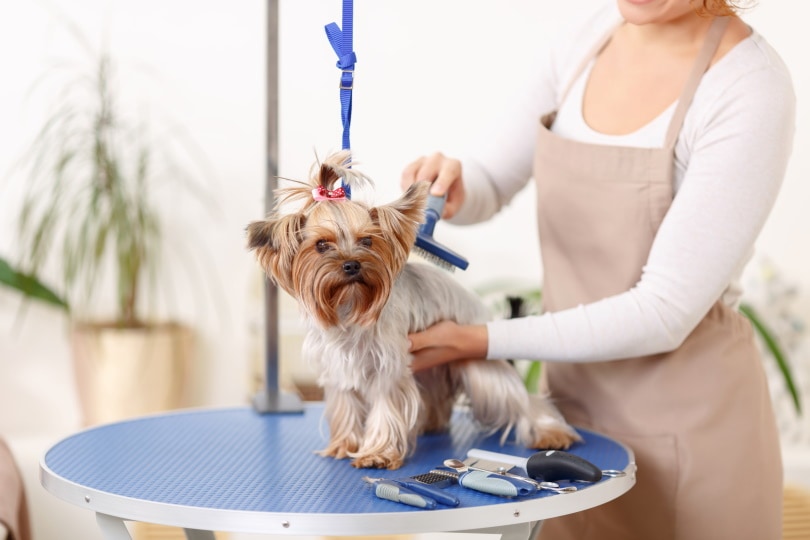
At Careers Collectiv, we don’t just train future professionals—we help educate pet owners too.
As experts in online animal care training, we work closely with groomers who tell us the same thing: a little preparation from dog owners goes a long way.
Whether you’re training to be a professional groomer or booking your first grooming appointment, this guide ensures the experience is positive for everyone—especially your dog.